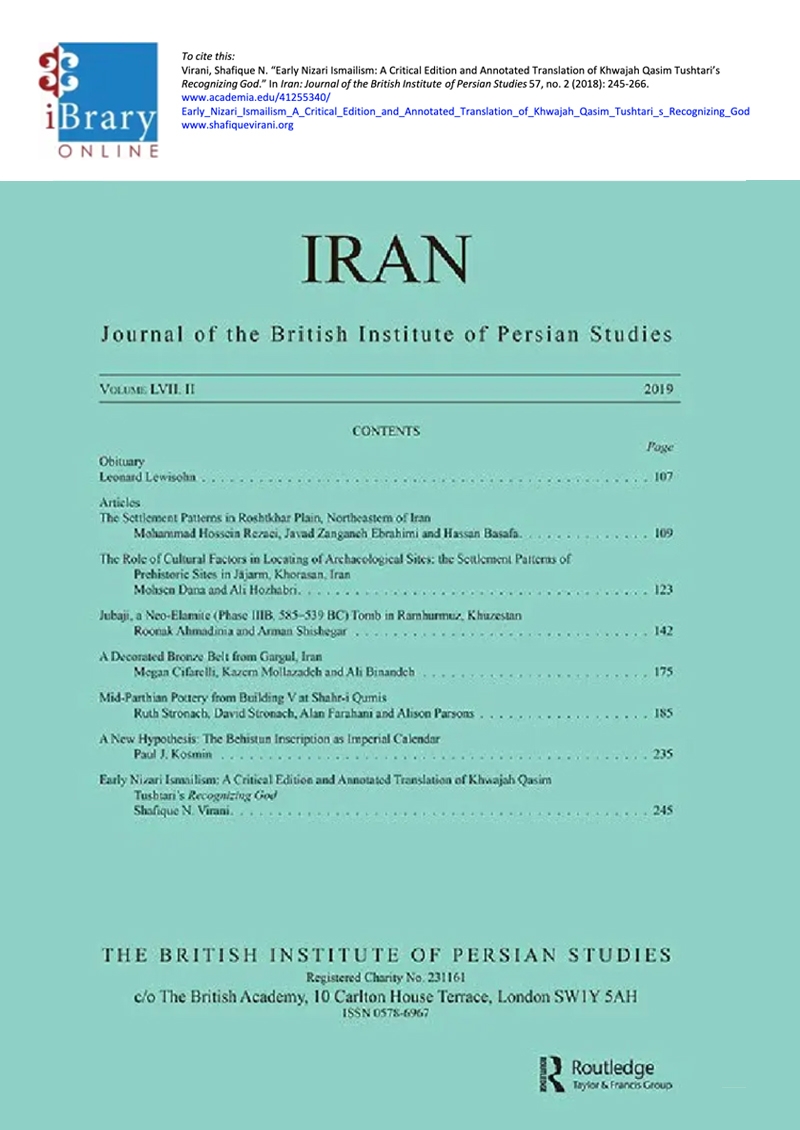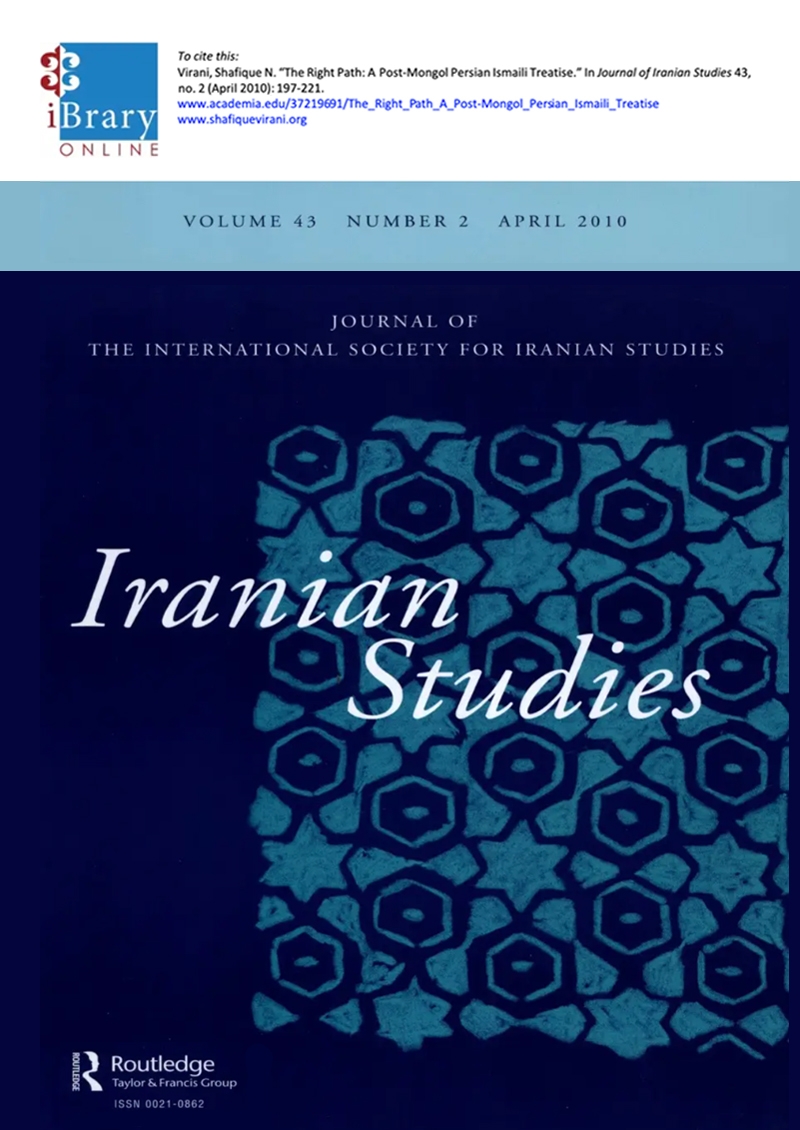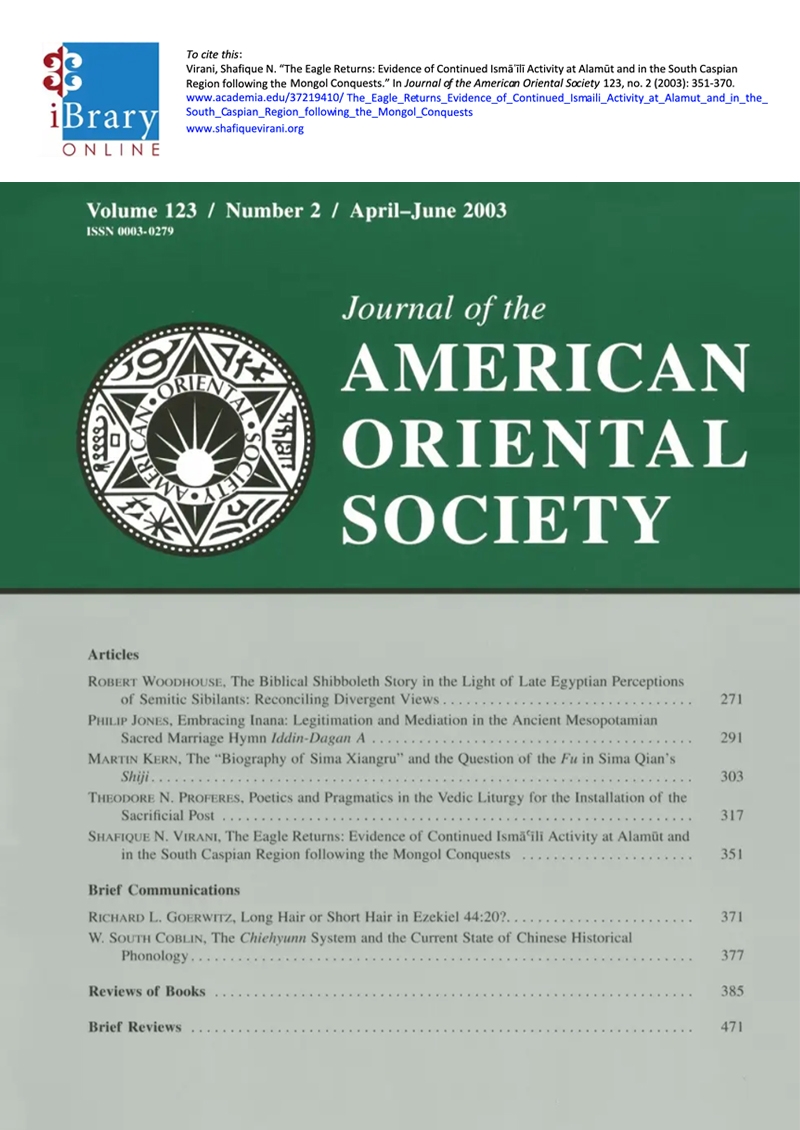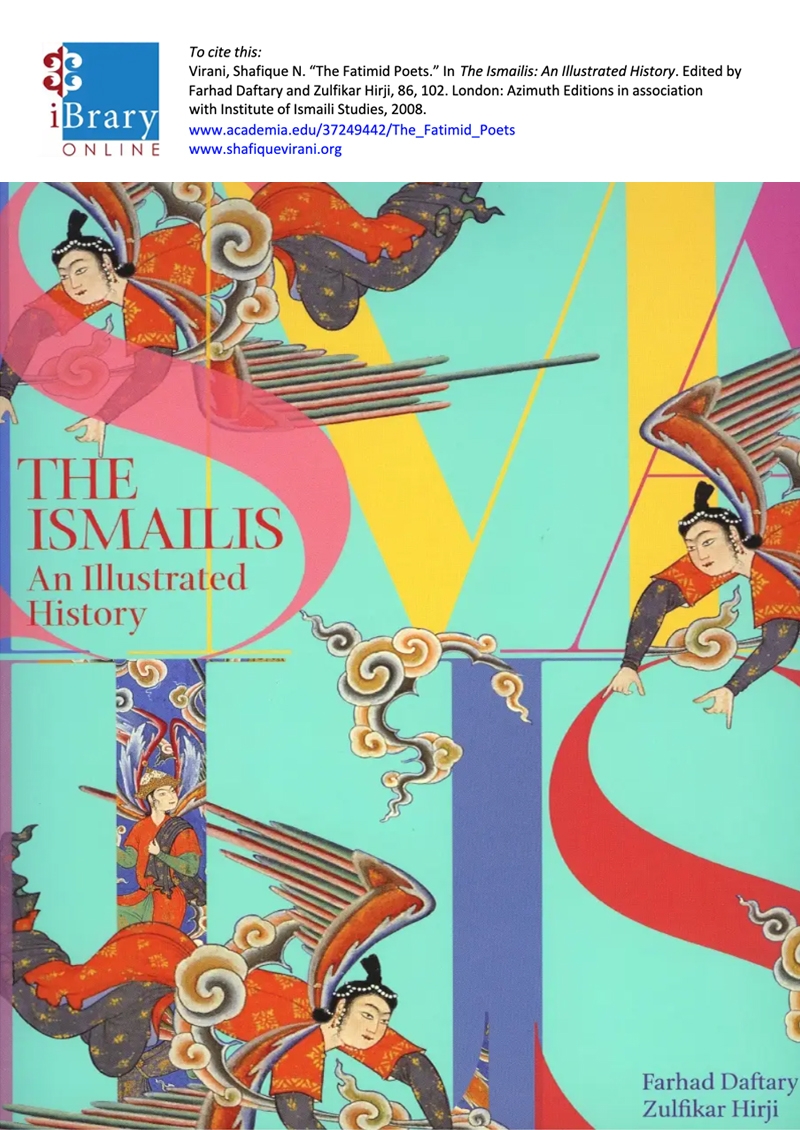Publication – English
Early Nizari Ismailism: A Critical Edition and Annotated Translation of Khwajah Qasim Tushtari’s Recognizing God
Iran: Journal of the British Institute of Persian Studies, 2019
Abstract:
Khwajah Qasim Tushtari’s recently discovered Recognizing God (Ma’rifat-i Khuday ta’ala) is one of the only texts known to have survived from the early Alamut period of Ismaili Muslim history. It preserves evidence of the “new Invitation” (da’wat-i jadid) to the Ismaili faith that al-Shahrastani (d. 548/1153) tells us was inaugurated by the Fatimid Imam al-Mustansir billah (d. 487/1094) and championed by Hasan-i Sabbah (d. 518/1124). The text emphasizes that the ultimate purpose of human existence is to know God, and that the path to this knowledge is through the Imam of the Time. Likely composed between 525/1131 and 533/1139, the text contains near-contemporary references to Sana’i Ghaznawi (d. ca. 525/1131) and points to the very early development of homiletic Persian pious, devotional and homiletic poetry as well as the “mathnawi metre” in Ismaili environments. This metre was later famously used by Farid al-Din ‘Attar (d. ca. 618/1221) and Jalal al-Din Rumi (d. 672/1273) in their mystical compositions. The article includes an introduction, critical edition and annotated translation to Qasim Tushtari’s Recognizing God.
Cite this publication:
Virani, Shafique N. “Early Nizari Ismailism: A Critical Edition and Annotated Translation of Khwajah Qasim Tushtari’s Recognizing God.” In Iran: Journal of the British Institute of Persian Studies 57, no. 2 (2018): 245-266.
Share what you’re reading on social media
If you liked this, you may also enjoy reading




